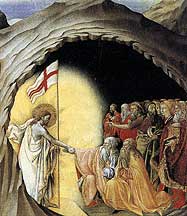
Liberal media recently proclaimed to the world that the Church had abandoned the notion of limbo and adopted a new one sustaining that children who die without baptism go to heaven. This opinion was seen in thousands of headlines which created an almost circus-like atmosphere for these grave theological matters.
However, when analyzing the actual document, one will not find what has been so superficially and simplistically reported. In fact, the study just published by the International Theological Commission, The Hope of Salvation for Infants Who Die Without Being Baptized, does not permit such a conclusion.1
“The Theory of Limbo Remains a Possible Theological Opinion”
Instead, the study expressly states that the theory on limbo, though having “never entered into the dogmatic definition of the Magisterium…. it remains a possible theological hypothesis.”2And the study insists: “The theory of limbo remains a possible theological opinion…”3
The limbo theory, the study notes, “has for so long been regarded as the common doctrine of the Church.”4 “In the Church’s tradition, the affirmation that children who died unbaptized are deprived of the beatific vision has for a long time been ‘common doctrine.”5 Just how long? The report says it “was the common Catholic teaching until the mid-twentieth century.”6
Pius VI Defended the Right of Catholic Schools to Teach the Limbo Theory
In a long historic-dogmatic exposition, the study of the Theological Commission insists that the Magisterium of the Church never made a solemn and definitive pronouncement about the limbo of children, though it often referred to limbo, or to the idea, by name.
However, we can conclude from the same exposition, that the Magisterium, above all, never said anything against that theological concept, but on the contrary, defended its legitimacy when attacked.
For instance, we read in the study that, “when the Jansenist Synod of Pistoia (1786) denounced the medieval theory of limbo, Pius VI defended the right of the Catholic schools to teach that those who died with the guilt of original sin alone are punished with the lack of the beatific vision (‘punishment of loss’), but not sensible pains (the punishment of ‘fire’).”7
Dangers of an Absolute a priori Reasoning
At the same time, while the study calls for a new approach to the subject, it warns against the dangers of a priori reasoning claiming admission into heaven for unbaptized children. Such aprioristic reasoning would destroy the gratuity of the supernatural order, thus renewing the Pelagian heresy that nature requires grace and that God, having created intelligent beings, would be obliged in justice to give them supernatural life and eternal happiness.
Thus, referring to the Encyclical Humani Generis published by Pope Pius XII in 1950 against the errors of naturalist theological currents, the study says:
“Pius XII had vigorously brought this [the gratuity of the supernatural order] to the consciousness of the Church by explaining that one destroys the gratuity of the supernatural order if one asserts that God could not create intelligent beings without ordaining and calling them to the beatific vision.”8
The study quotes Pius XII again for in 1958, in the Allocution to Italian Midwives, he was even more specific in speaking about children who die without baptism:
“The state of grace is absolutely necessary for salvation: Without it supernatural happiness, the beatific vision of God, cannot be attained. In an adult an act of love may suffice to obtain him sanctifying grace and so supply for the lack of baptism; to the child still unborn or newly born this way is not open.”9
Not a New Theory, but a Hope
However, the study says, “besides the theory of limbo (which remains a possible theological opinion), there can be other ways to integrate and safeguard the principles of the faith grounded in Scripture …. These other ways are not achieved by modifying the principles of the faith or by elaborating hypothetical theories; rather, they seek an integration and coherent reconciliation of the principles of the faith …. by giving more weight to God’s universal salvific will …. in order to account for the hope that infants dying without baptism could enjoy eternal life in the beatific vision.”10
Therefore, the study by the International Theological Commission does not propose a new theological theory parallel or opposed to that of limbo, but merely presents a hope that some mysterious way may exist whereby God takes unbaptized children to heaven.
After presenting the theological and liturgical reasons to nourish such a hope, the study closes:
“Our conclusion is that the many factors that we have considered above give serious theological and liturgical grounds for hope that unbaptized infants who die will be saved and enjoy the beatific vision. We emphasize that these are reasons for prayerful hope rather than grounds for sure knowledge.”11
Moreover, the International Theological Commission warns that its study cannot serve as a basis to deny the need for baptism or delay its administration to children.
It is clear that in spite of the sensationalism with which the media handled this matter, neither has the Church abolished the theological notion of limbo, nor has the International Theological Commission recommended that this be done.
One remains entirely free, therefore, to adhere to the common theory, which carries the weight of a long tradition and the authority of many Doctors of the Church, including Saint Thomas Aquinas.
As Sister Sara Butler, an International Theological Commission member, declared to the magazine Inside the Vatican: “The report concludes that limbo remains a ‘possible theological opinion.’ Anyone who wants to defend it is free to do so.”
_________________________

